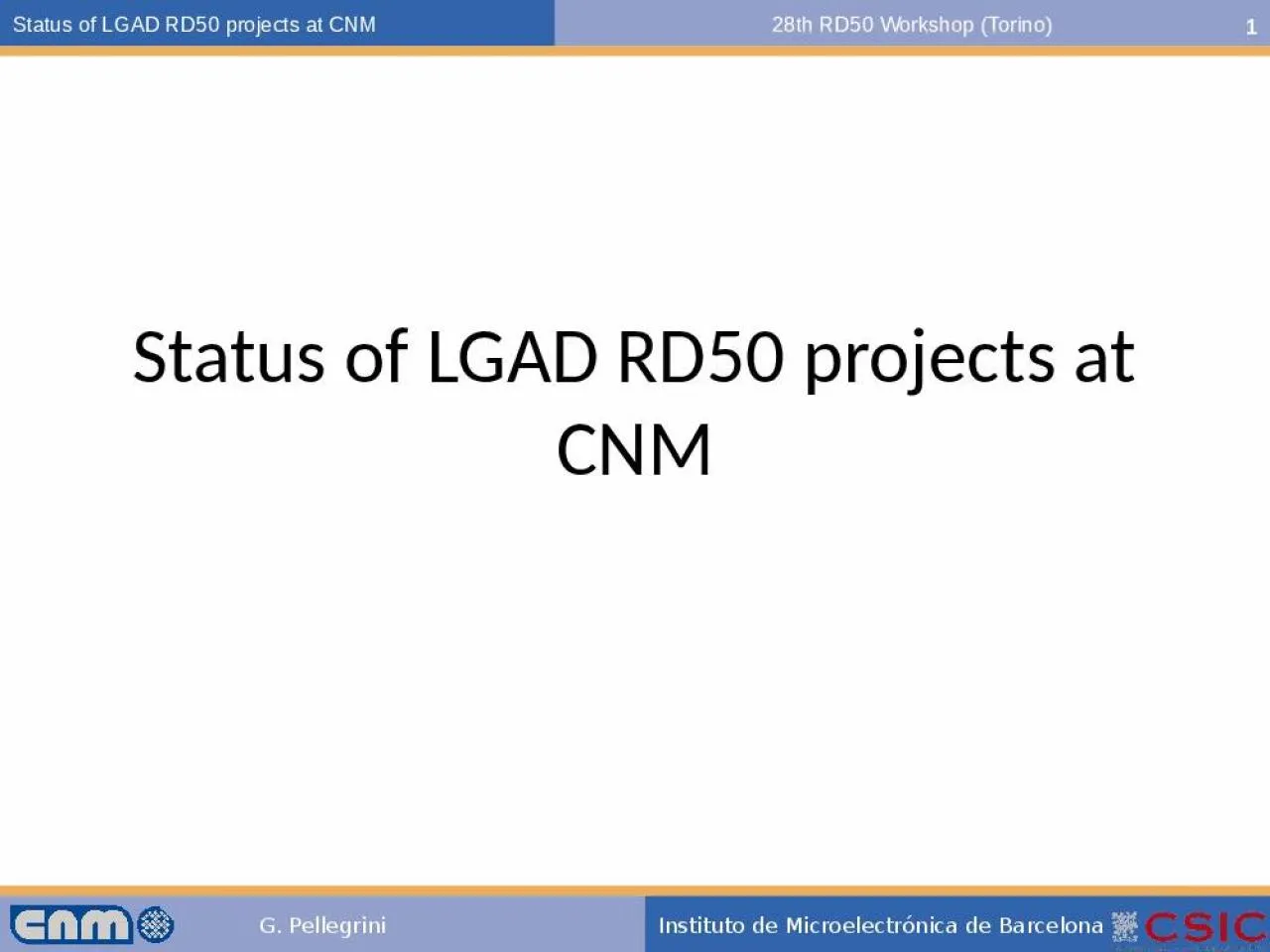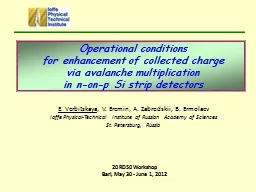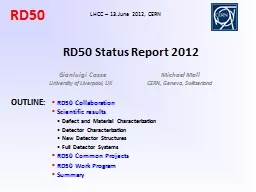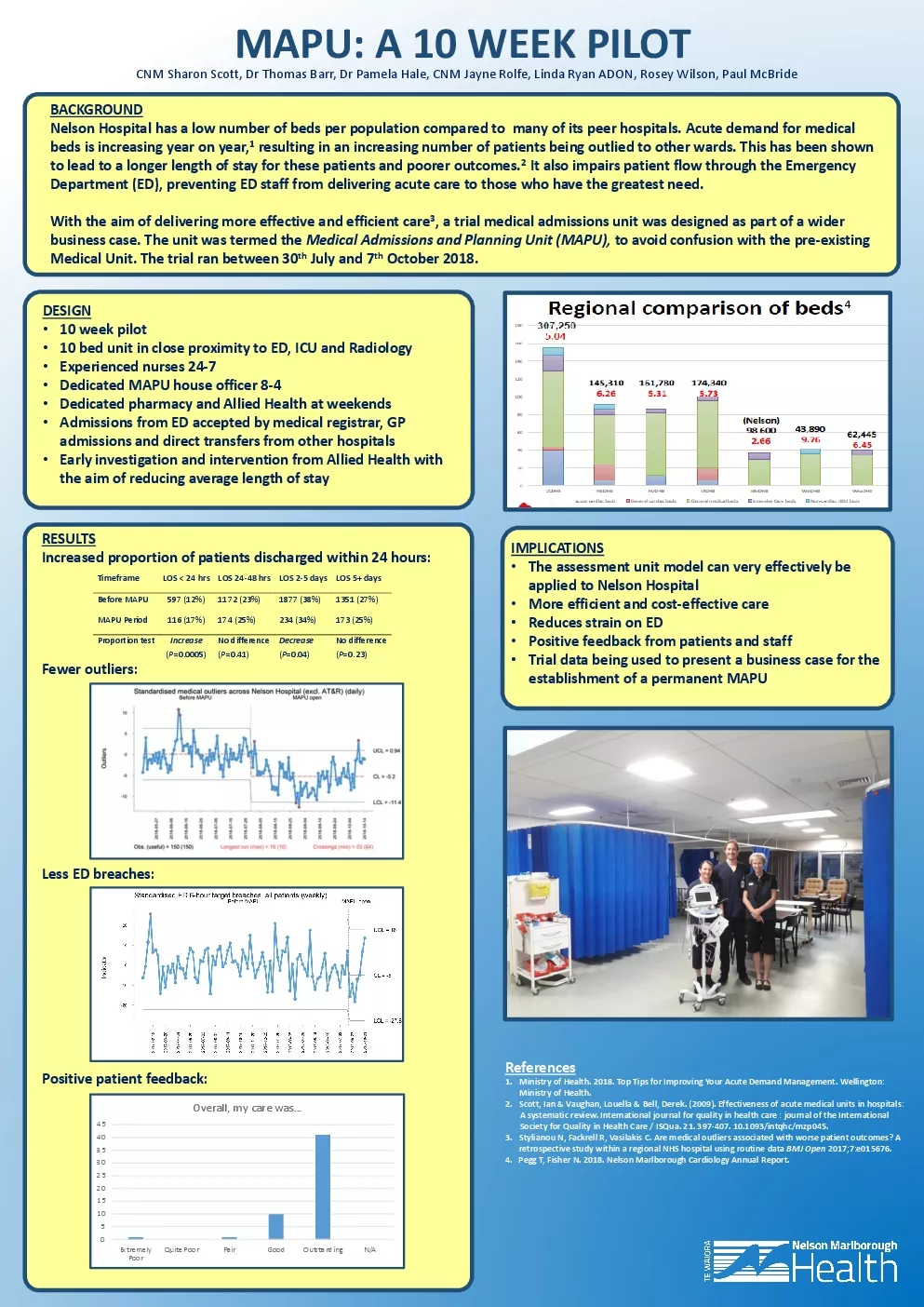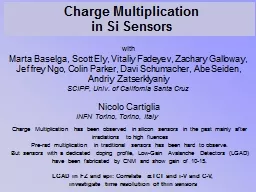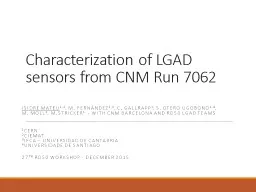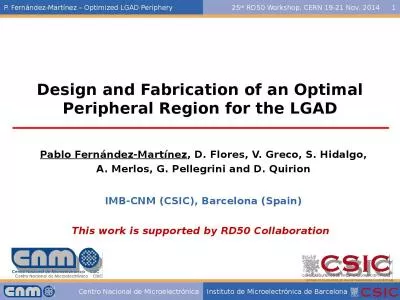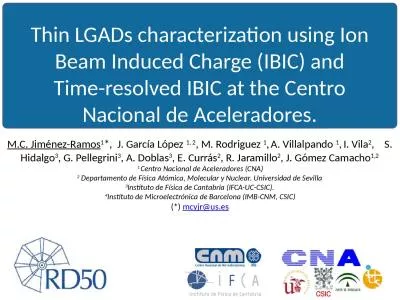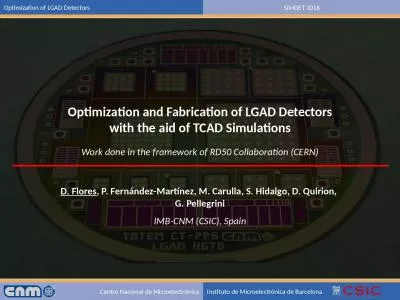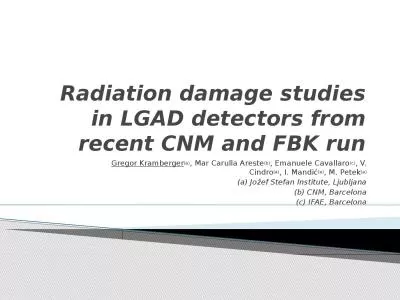PPT-Status of LGAD RD50 projects at CNM
Author : callie | Published Date : 2022-05-14
Outline Gallium Implantation to Enhance the Radiation Hardness of LGAD Detectors Carbon doping Strip sensors made of Nrich Silicon See A Dierlamms Talk Measurement
Presentation Embed Code
Download Presentation
Download Presentation The PPT/PDF document "Status of LGAD RD50 projects at CNM" is the property of its rightful owner. Permission is granted to download and print the materials on this website for personal, non-commercial use only, and to display it on your personal computer provided you do not modify the materials and that you retain all copyright notices contained in the materials. By downloading content from our website, you accept the terms of this agreement.
Status of LGAD RD50 projects at CNM: Transcript
Download Rules Of Document
"Status of LGAD RD50 projects at CNM"The content belongs to its owner. You may download and print it for personal use, without modification, and keep all copyright notices. By downloading, you agree to these terms.
Related Documents

